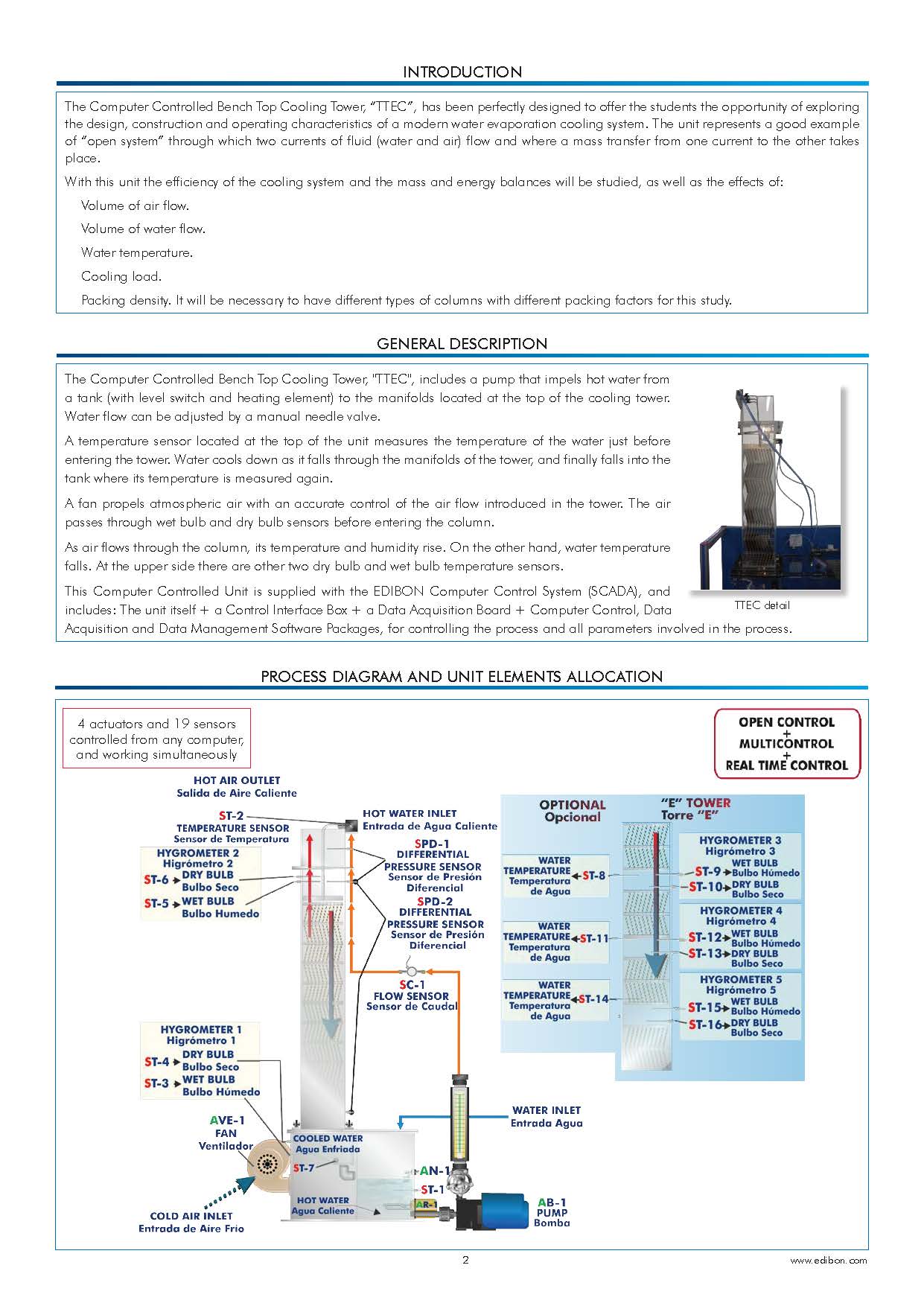
Computer Controlled Bench Top Cooling Tower
INTRODUCTION
The Computer Controlled Bench Top Cooling Tower, “TTEC”, has been perfectly designed to offer the students the opportunity of exploring the design, construction and operating characteristics of a modern water evaporation cooling system. The unit represents a good example of “open system” through which two currents of fluid (water and air) flow and where a mass transfer from one current to the other takes place.
With this unit the efficiency of the cooling system and the mass and energy balances will be studied, as well as the effects of:
– Volume of air flow.
– Volume of water flow.
– Water temperature.
– Cooling load.
– Packing density. It will be necessary to have different types of columns with different packing factors for this study.
EXERCISES AND PRACTICAL POSSIBILITIES TO BE DONE WITH THE MAIN ITEMS
- Process observation inside a bench top cooling tower.
- Determination of evaporation velocity.
- Mass balance. Use of psychrometric charts.
- Energy balance.
- Effect of cooling load against “Wet bulb approach”.
- Relation between air velocity, wet bulb approach and head loss.
- Determination of the cooling capacity.
- Determination of the cooling capacity for different cooling towers.
- Thermodynamic properties.
- Evaporation from a wet bed.
- Observation of water flow pattern and distribution.
- Control system: Temperature sensors calibration.
- Control system: PID temperature control.
- Control system: Flow sensors calibration.
- Study of flow sensor hysteresis.
- Control system: Determination of adjustment parameters of a PWM controller.
- Differential pressure sensors calibration.
Additional practical possibilities: - Variation of specific enthalpy with pressure.
- Properties of air.
- Use of a psychometric map.
- Determination of water flow.



